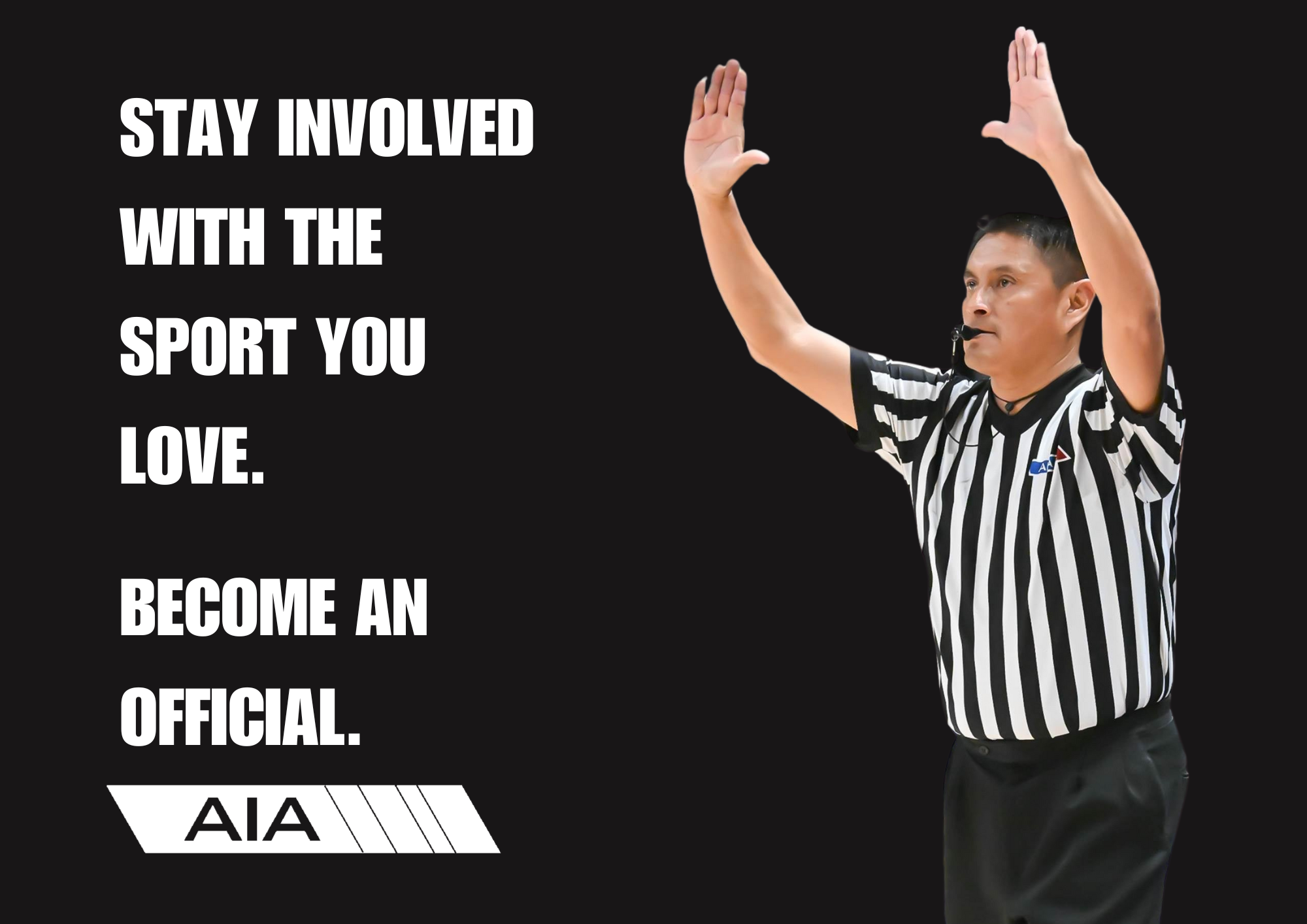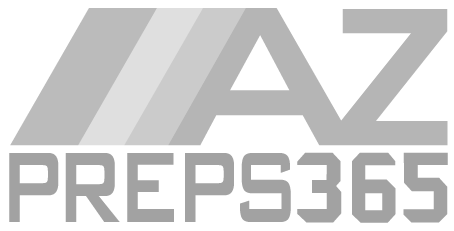AIA and MaxPreps partner to help establish new classification process
January 28, 2015 by MaxPreps, AZPreps365
Every year, state high school sports governing bodies like the Arizona Interscholastic Association wrestle with the mighty challenge of reclassification.
How to best divide schools to achieve competitive balance between sports and divisions, while addressing travel issues and maintaining traditional rivalries, has become one of the key issues these governing bodies continually face.
Historically, enrollment numbers have been the key factor in determining how schools are placed in appropriate divisions, but a recent collaboration between the AIA and MaxPreps brings a new approach to the classification process.
For its upcoming reclassification cycle, the AIA Executive Board sought a more detailed process in how it places teams into their respective divisions, believing enrollment numbers alone did not accurately balance competition.
To that end, the AIA Executive Board enlisted the services of two consultants, one a Ph.D. candidate in statistics at Harvard and the other a Ph.D. in mathematics. They developed a statistical formula to classify Arizona schools into divisions. Included in the classification formula were current enrollment figures, competitive history and free and reduced lunch numbers for each school. The school lunch data helps administrators gauge a school community's capacity to raise and spend money on extracurricular activities, such as sports teams.
The AIA also requested from MaxPreps the records and rankings history for AIA member schools over the most recent six-year period (Fall 2014 rankings were not included). The rankings in 11 sports helped measure athletic performance across all schools regardless of current classification and were also included in the new classification formula.
It is the first time a state governing body and MaxPreps have collaborated on such a project.
"MaxPreps has been a valued partner, and from our collaboration with azpreps365.com with stats, articles and rankings, it was only a natural fit to work with MaxPreps on this project," said Brian Bolitho, AIA Director of Business Media. "We believe the MaxPreps.com rankings formula is the true indicator of a school's success, and that was why it was utilized within the formula to initially place a member school into divisions by sport."
For MaxPreps, it was an opportunity to participate in a new process that is certain to garner interest nationally from other governing bodies looking at a different approach to classification.
"The AIA is a clear national leader in the effort to protect and strengthen high school sports," said Mike Wilkes, MaxPreps Director of Association Partnership and Development. "We were excited to support the AIA's effort on their new division alignments and look forward to future opportunities to support the AIA."
The new division placements were released by the AIA on Jan. 26. As with any new process, and one as important as classification, initial reaction was expected to be varied. Thus, the AIA included a process where schools can appeal their initial placement.
Once the appeals process is completed in mid-February, the new one-time classifications will become final for the upcoming three-year cycle. The AIA will go back to a two-year cycle for the 2018-19 school year, and schools will then be classified by sport advisory committees.
That process will entail the sport advisory committees reviewing the current division and section alignments, and making recommendations to promote schools to higher divisions or relegate schools down to lower divisions.
The formula will be used to support the recommendations of the sport advisory committees. The AIA Executive Board will approve or deny the recommendations made by the sport advisory committees, and then all AIA schools will have the opportunity to appeal their current placement.
"The goal here is to build rivalries within the divisions and within the sections and have the best possible competition within those divisions," Bolitho said. "Ten years down the road, we want people to have that familiarity with who they are playing and for the natural rivalries to be built up again.
"Doing so we believe will only generate more interest with the high school communities."
How to best divide schools to achieve competitive balance between sports and divisions, while addressing travel issues and maintaining traditional rivalries, has become one of the key issues these governing bodies continually face.
Historically, enrollment numbers have been the key factor in determining how schools are placed in appropriate divisions, but a recent collaboration between the AIA and MaxPreps brings a new approach to the classification process.
For its upcoming reclassification cycle, the AIA Executive Board sought a more detailed process in how it places teams into their respective divisions, believing enrollment numbers alone did not accurately balance competition.
To that end, the AIA Executive Board enlisted the services of two consultants, one a Ph.D. candidate in statistics at Harvard and the other a Ph.D. in mathematics. They developed a statistical formula to classify Arizona schools into divisions. Included in the classification formula were current enrollment figures, competitive history and free and reduced lunch numbers for each school. The school lunch data helps administrators gauge a school community's capacity to raise and spend money on extracurricular activities, such as sports teams.
The AIA also requested from MaxPreps the records and rankings history for AIA member schools over the most recent six-year period (Fall 2014 rankings were not included). The rankings in 11 sports helped measure athletic performance across all schools regardless of current classification and were also included in the new classification formula.
It is the first time a state governing body and MaxPreps have collaborated on such a project.
"MaxPreps has been a valued partner, and from our collaboration with azpreps365.com with stats, articles and rankings, it was only a natural fit to work with MaxPreps on this project," said Brian Bolitho, AIA Director of Business Media. "We believe the MaxPreps.com rankings formula is the true indicator of a school's success, and that was why it was utilized within the formula to initially place a member school into divisions by sport."
For MaxPreps, it was an opportunity to participate in a new process that is certain to garner interest nationally from other governing bodies looking at a different approach to classification.
"The AIA is a clear national leader in the effort to protect and strengthen high school sports," said Mike Wilkes, MaxPreps Director of Association Partnership and Development. "We were excited to support the AIA's effort on their new division alignments and look forward to future opportunities to support the AIA."
The new division placements were released by the AIA on Jan. 26. As with any new process, and one as important as classification, initial reaction was expected to be varied. Thus, the AIA included a process where schools can appeal their initial placement.
Once the appeals process is completed in mid-February, the new one-time classifications will become final for the upcoming three-year cycle. The AIA will go back to a two-year cycle for the 2018-19 school year, and schools will then be classified by sport advisory committees.
That process will entail the sport advisory committees reviewing the current division and section alignments, and making recommendations to promote schools to higher divisions or relegate schools down to lower divisions.
The formula will be used to support the recommendations of the sport advisory committees. The AIA Executive Board will approve or deny the recommendations made by the sport advisory committees, and then all AIA schools will have the opportunity to appeal their current placement.
"The goal here is to build rivalries within the divisions and within the sections and have the best possible competition within those divisions," Bolitho said. "Ten years down the road, we want people to have that familiarity with who they are playing and for the natural rivalries to be built up again.
"Doing so we believe will only generate more interest with the high school communities."



